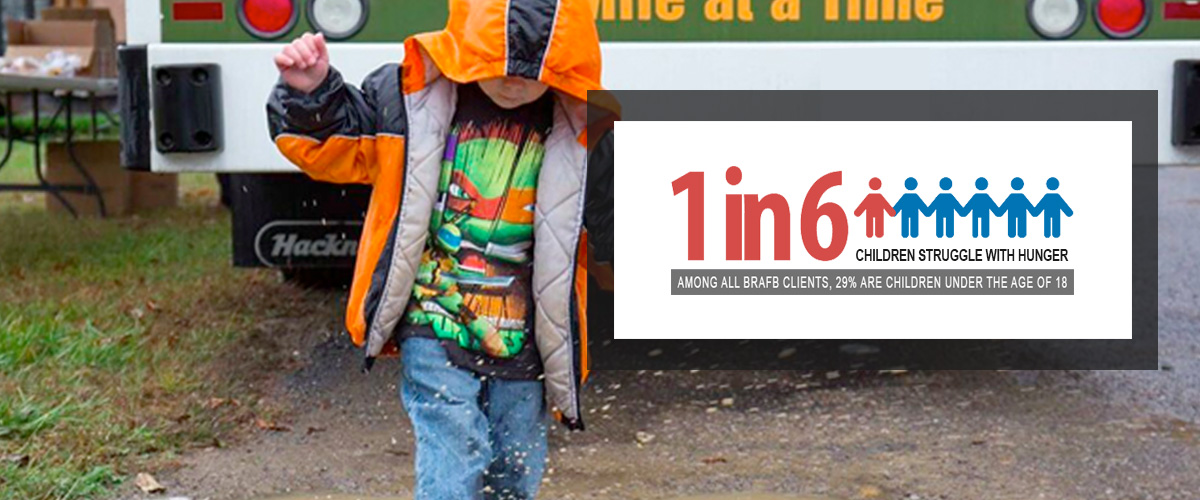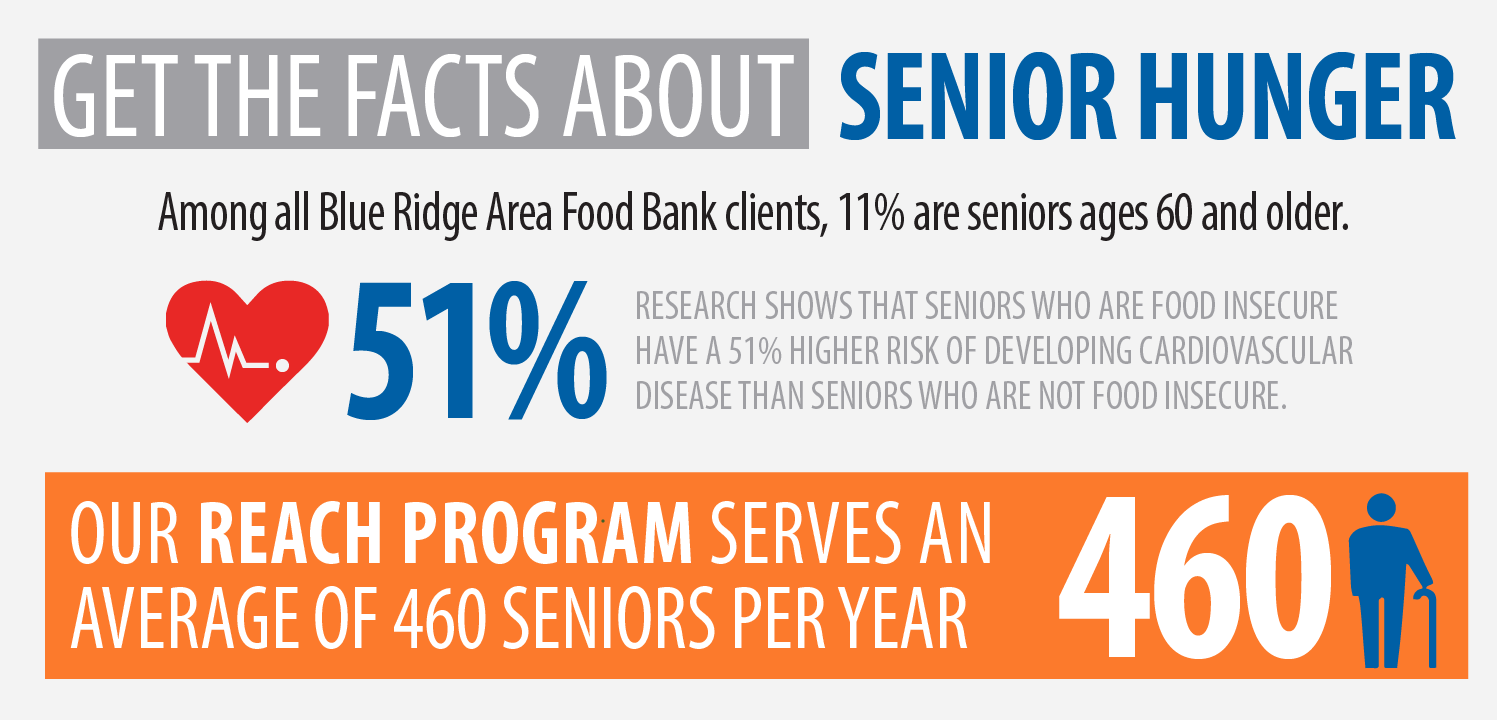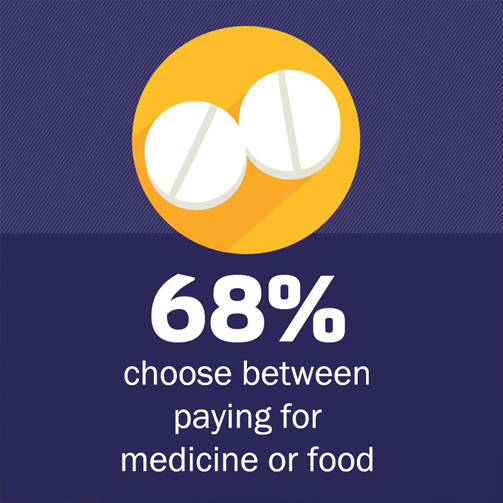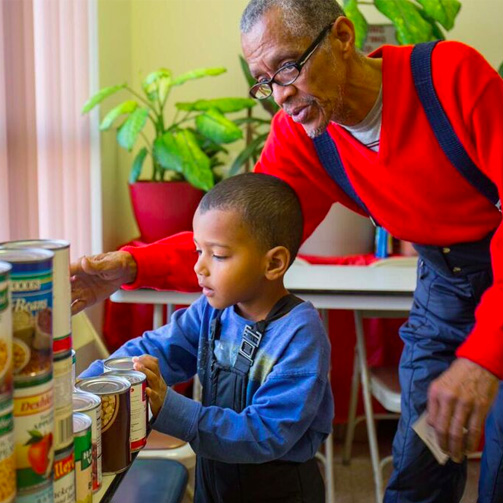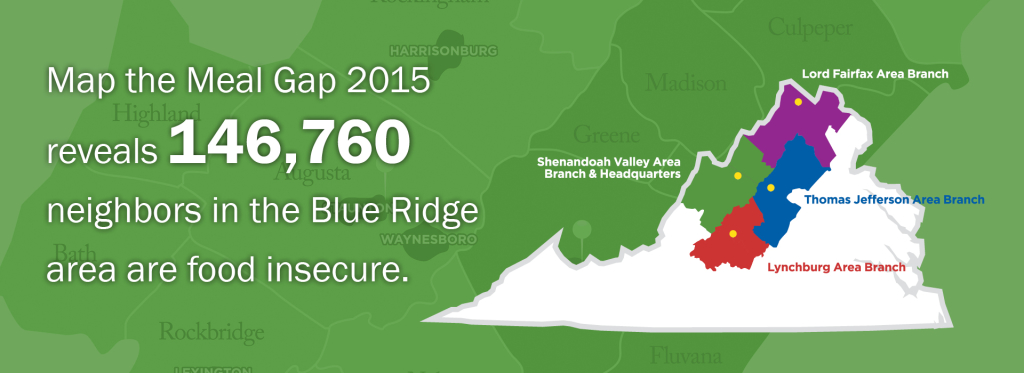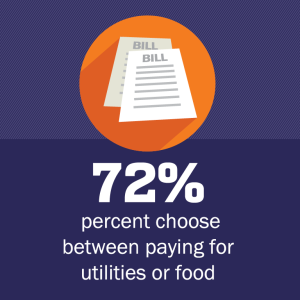
Factoring in inflation, many families now earn less than they did before the Great Recession. Those who kept their jobs, or quickly found new ones after being let go, are no better off. (Sentier Research, 2014)
Finding it challenging to make ends meet, our clients have to make tough choices. Listed below are stats from the 2014 Hunger Study:
60% of households have at least one employed member
78% of clients have a high school degree or GED
29% are children under age 18
11% are seniors age 60 and older
55% have incomes that fall at or below the federal poverty line
Our Food Bank serves an average of 118,600 people per month. We distributed 24.8 million pounds or 20.6 million meals last year.
The Food Bank’s own research has shown that 85 percent of its clients intentionally buy cheap, unhealthy food to stretch their grocery dollars.
We’ve responded by taking an interest in the health of our clients. Undernourished children are underperformers in school. Food-insecure seniors suffer worse health outcomes than seniors with regular access to healthful foods.
The result is a new, five-year strategic plan that focuses on these core strategies:
Feed our neighbors in need, providing both basic sustenance and sound nutrition
Strengthen our food assistance network of food pantries, soup kitchens and shelters
Reach the underserved, who are especially vulnerable or have less access to food than others
Promote healthful eating among families in need
Mobilize community members and leaders in the fight against hunger
